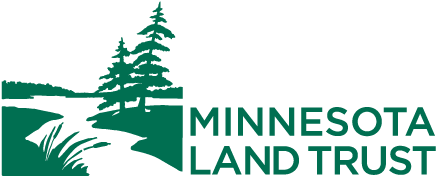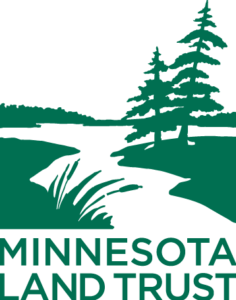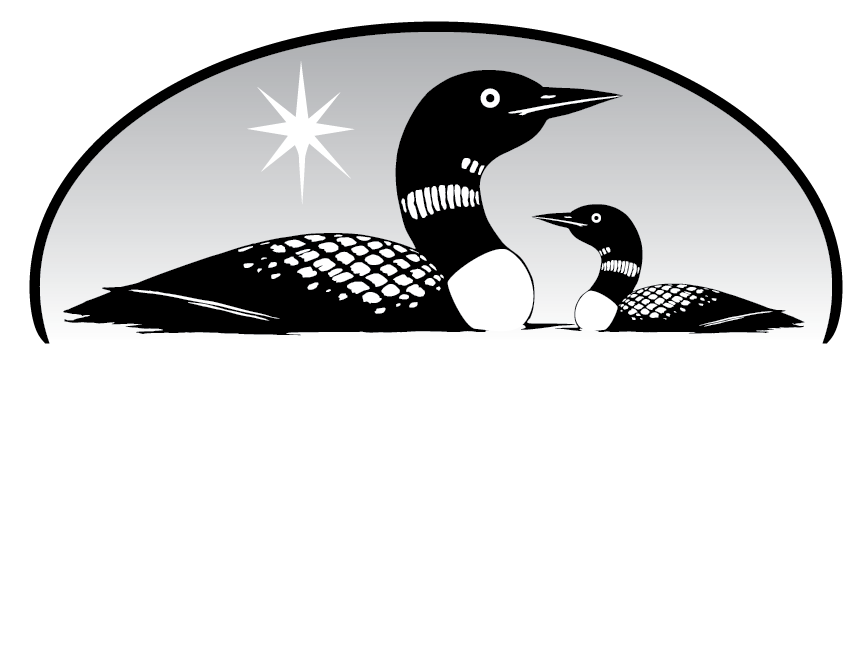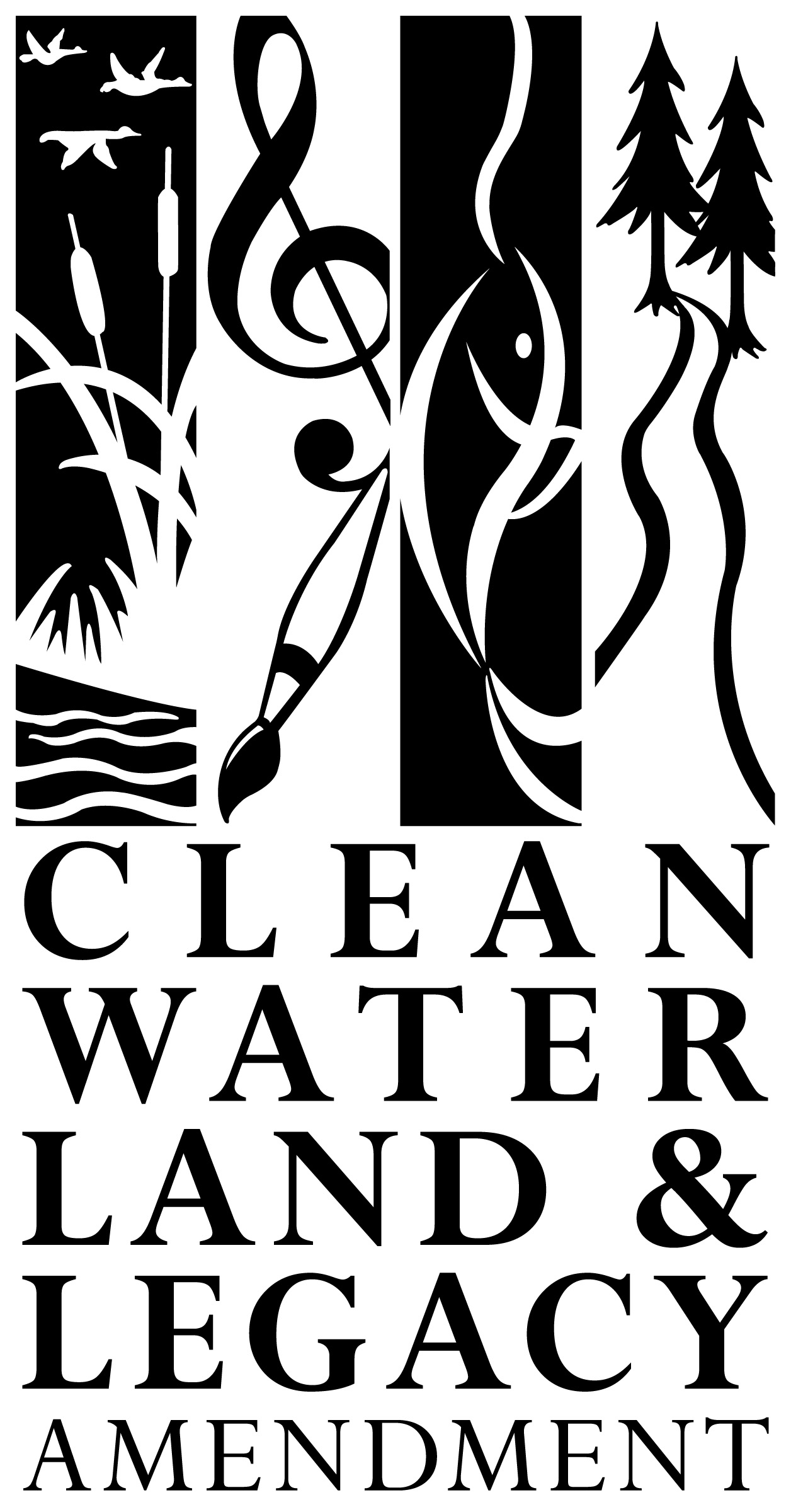Since 1991, the Minnesota Land Trust has been working with private landowners, local communities, and local partners to protect natural land across the state.
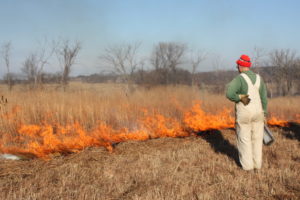
Landowner performing prescribed prairie burn
Since then, we have protected over 60,000 acres of natural land, forever. Although many of these properties come to us in great shape, many of them include retired agricultural areas, have been impacted by long-term human uses, or have been affected by non-native species. We work with landowners to conduct private land restorations on these properties, focused on returning the land to its natural state, as determined by the Minnesota Department of Natural Resource’s (MN DNR) Native Plant Community data. This data describes and maps Minnesota’s unique Native Plant Communities which are classified as: “groups of native plants that interact with each other and with their environment in ways not greatly altered by modern human activity or by introduced organisms.” Although many vegetated areas across the state have retained their native plant community status, or have been restored to their respective native plant community over time, many existing areas are not native plant communities. These areas may be dominated by exotic or invasive species, or may have been affected by human activities.
The Minnesota Land Trust conducts three common types of restoration projects across the state: prairie restoration, wetland restoration, and woody invasives removal.
Prairie Restoration
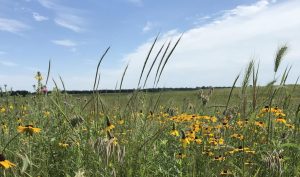 Prairie restoration is one of our most common types of restoration. This type of restoration is focused on restoring disturbed areas that were previously prairie, or retiring agricultural areas back into their respective Native Plant Community type (most often prairie). This type of restoration is extremely important, as there is less than 1% of remaining historic prairie across the entire state.
Prairie restoration is one of our most common types of restoration. This type of restoration is focused on restoring disturbed areas that were previously prairie, or retiring agricultural areas back into their respective Native Plant Community type (most often prairie). This type of restoration is extremely important, as there is less than 1% of remaining historic prairie across the entire state.
All of our restorations begin by determining the intended Native Plant Community for the focus area. After the correct community type is determined, site preparation should ensure that there is a bare soil surface for seeding. Site preparation usually involves some combination of tilling and herbicide application, which removes existing non-native vegetation. Next, the tilled area will be planted with a custom seed mix that aligns with native species commonly occurring within the Native Plant Community type. Ideally, the seeding will occur in fall after the soil temperature is less than 50 degrees Fahrenheit and before snow, as the cold stratification improves seed germination. After seeding, the area will be shallowly rolled or packed to reduce moisture loss in the soil, and to encourage good seed-to-soil contact.
On average, three-year post-seeding maintenance is required for proper seed establishment. Mowing and prescribed burns are often required in subsequent years, in order to control invasive/aggressive species establishment, and to promote germination, and control natural succession.
Wetland Restoration
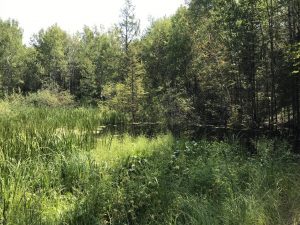 Our next most common type of restoration is wetland restoration. Oftentimes, this type of restoration is done to reverse the effects of ditching or draining for agricultural purposes. Wetland restorations begin by identifying wetland areas that no longer maintain high water levels because of human intervention. Reversing the draining most often involves building ditch plugs, removing/blocking tile, and/or removing infilled sediment. Any construction projects are designed to be resilient, so they can accommodate varying water levels, which becomes increasingly valuable as climate change will likely increase flooding events in the years to come.
Our next most common type of restoration is wetland restoration. Oftentimes, this type of restoration is done to reverse the effects of ditching or draining for agricultural purposes. Wetland restorations begin by identifying wetland areas that no longer maintain high water levels because of human intervention. Reversing the draining most often involves building ditch plugs, removing/blocking tile, and/or removing infilled sediment. Any construction projects are designed to be resilient, so they can accommodate varying water levels, which becomes increasingly valuable as climate change will likely increase flooding events in the years to come.
At this point, the wetlands will naturally refill, and associated wetland vegetation becomes established from long-lived seeds in the soil. Sometimes this new vegetation includes reed canary grass, a MN DNR listed invasive species, and narrow-leaved cattail which can quickly crowd out other species. Large patches of established reed canary grass and narrow-leaved cattail are best managed in conjunction with fluctuations in water levels using natural changes in water levels or by water control structures. Grazing, burning, or spot treatment with herbicides can also help scale back these species to a manageable level. However, the only way to fully eradicate reed canary grass is to remove the top two feet of soil.
In Minnesota, large prairie and wetland complexes support many species of endangered and threatened wildlife. Restoring these areas helps us protect these species, and helps keep our wetlands clean, providing clean water for all Minnesotans.
Woody Vegetation
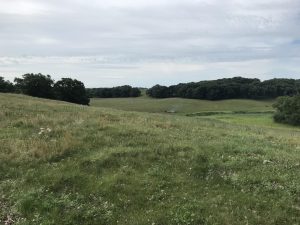
Site cleared of woody invasives
Our last common type of restoration, is woody vegetation removal. This type of restoration is focused on removing undesirable trees and shrubs (oftentimes early successional prairie species including red cedar and red pine) from native prairie areas. Similarly, this type of restoration can also involve removing noxious or invasive species (including buckthorn, Oriental bittersweet, and Siberian elm) from a variety of native plant community types. When these unwanted species are removed these areas become opened up for native species, which in turn results in higher-quality habitat for wildlife and native species. Invasive/non-native species can be removed using a variety of different methods, including: cutting and spot-treating with herbicide, mowing, fire, or grazing. Long-term management of these types of invasive species is required in the following years.
To conduct these restoration projects on private lands, the Minnesota Land Trust works with a variety of partners, including: the U.S. Fish and Wildlife Department, the Audubon Society, and local soil and water conservation districts. Collaboration between our organizations allows us to continue conducting high-quality restorations across the state.
Learn more about our restoration work, and how you can work with the Land Trust to improve your protected property.
Watch our full webinar about private lands restoration here:
Resources List:
MN Department of Agriculture Noxious Weed List
MN DNR Invasive Non-native Plants List
University of Minnesota Extension
